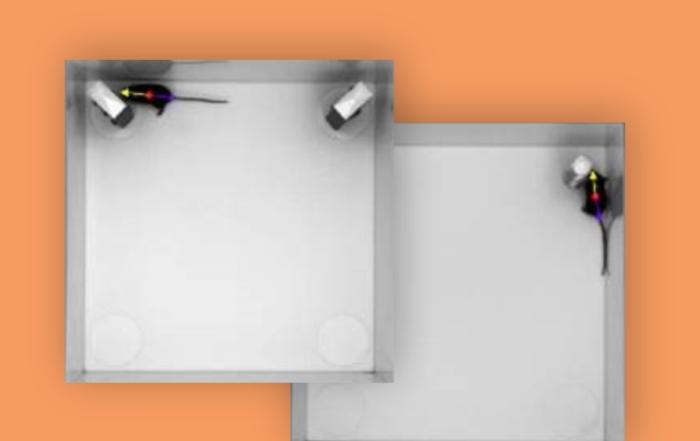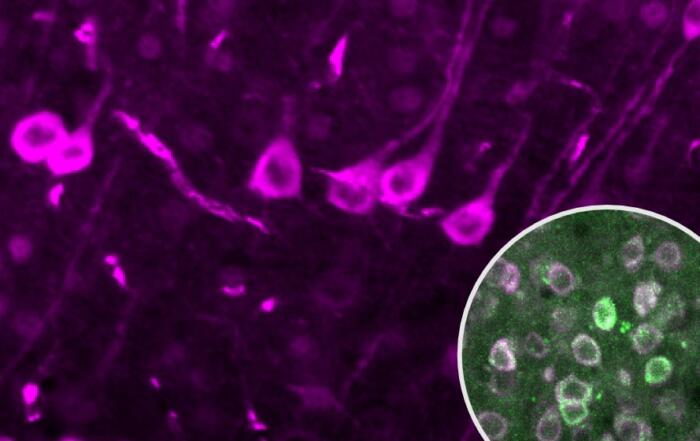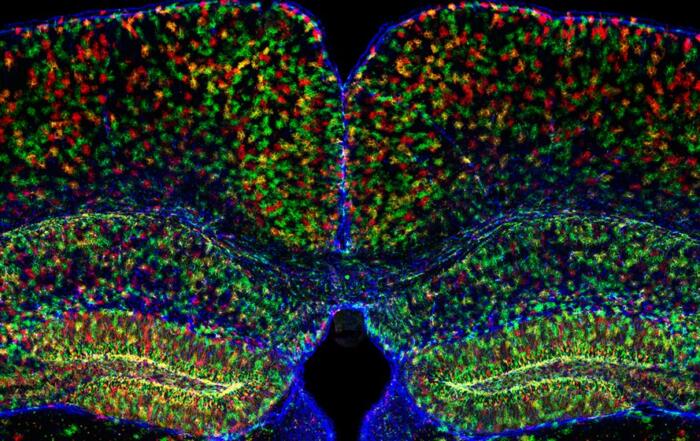In this webinar, Jason Rogers, PhD, and De Wet Wolmarans, PhD, present two research protocols for tracking, quantifying, and analyzing behavior in Long-Evans rats and deer mice.
Highlights
- Introduction to a novel elevated open field
- Overview of EthoVision XT for behavioral experiments
- Compulsive behavior in deer mice
- Effects of pharmacological intervention on marble burying and nest building behavior
- Risk taking in highly stereotypical deer mice
Webinar Summary
Dr. Rogers begins this webinar by discussing stress behavior in Long-Evans rats when they are placed in a novel elevated open field. In the study highlighted, Dr. Rogers and colleagues investigated if stressed animals self-administer more cocaine compared to non-stressed animals. Half of the animals were subjected to chronic, unpredictable stress for 5 days, and all animals were allowed to self-administer cocaine for 14 days in a sound attenuation chamber. Open field testing was performed following drug withdrawal, reinstatement testing, and stress confirmation; this open field consisted of a round 122 cm-sized gray-painted board that was elevated 150 cm off of the ground.
“[This is] an anxiogenic, stressful environment where the animals aren’t allowed to hide in the corner, there’s no thigmotaxis available, it’s a round area, there’s no walls, and so it promotes exploration while simultaneously giving them an area that they want to avoid.”
In these experiments, animal behavior was tracked using EthoVision XT. Traditionally, this software compares each sampled image to a reference image which is updated regularly, compensating for any background changes. However, when an animal looks over the edge of the elevated field and dips its head, the software can no longer differentiate the animal and the background. Newer versions of this software circumvent this issue by applying a deep learning algorithm instead of dynamic subtraction.
“[The new algorithm] has an artificial neural network base, something that’s way beyond even my understanding. … It’s able to more accurately track the animals even when their nose goes over.”
The new EthoVision XT uses a trained network that has learned to extract features from a number of rodent videos in which the nose and tail points were previously annotated. While tracking, the network analyzes a portion of the image that includes the detected subject, creates a probability map of occurrence for the nose and tail points, and estimates their positions based on the highest probability. With this setup, stressed animals were found to take longer to reach the field edge compared to control animals, and also spent less time around the edge; likewise, they stayed in the center for a longer time and maintained a higher distance from the edge on average. No difference was observed in the distance traveled or speed between stressed and control animals, meaning there were no motor deficits in the stressed animals.
“Because [the deep learning algorithm] is able to keep that nose point as the animals look over the edge, you don’t have that back-and-forth as it’s trying to model the nose point as the animal moves … and you’re able to accurately detect where the head is and keep it over the edge, looking at that head dip for longer.”
In the next portion of this webinar, Professor Wolmarans presents his research on the naturalistic expression of abnormal animal behaviors. Most animal research models involve genetic manipulation, behavioral training, or pharmacological intervention. Instead, Professor Wolmarans wanted to develop the deer mouse as a framework for the study of obsessive-compulsive disorder (OCD), and goes on to demonstrate the value of highlighting what is really abnormal against what is subjectively abnormal in the context of studying compulsivity.
An early study that Professor Wolmarans conducted revealed that a high number of deer mice persistently engage in high stereotypy activity (i.e., repetitively jumping, pattern running). Professor Wolmarans later performed marble burying tests on these animals to ascertain if they would present with other forms of compulsive behavior as seen in humans with compulsivity. While all animals seemed to bury the marbles, only 11% of them displayed high burying behavior.
“We had quite a come and go with the reviewer [about it]. … Why would you look at these four animals only? … You’ve got outliers in any investigation, that might be the case, but the question begs as to why certain animals present with such behavior.”
Therefore, Professor Wolmarans performed a second test on the mice that investigated their nest building behavior when presented with cotton wool. It was important to look not just at animals who build a big nest in one night, but in all the nights, because that speaks more conceptually to what compulsivity is in essence. Approximately 30% of animals were found to express large nest building behavior.
“The minority of animals actually reveal the majority of the findings.”
Since humans with psychiatric disorders are perceived to be different by their peers, Professor Wolmarans investigated how normal animals would perceive highly stereotypical animals when placed in the same cage. For this study, it was necessary to acquire EthoVision XT because three animals had to be tracked in the same arena. In groups of the same phenotype, a remarkable difference was observed in the duration that the mice wanted to spend together; highly stereotypical animals were much more sociable with each other compared to the normal animals.
When two normal animals were in the presence of a highly stereotypical animal, no difference was observed in the duration that these two animals spent together compared to the control group, and they also did not want to interact with the highly stereotypical animal. In contrast, when in the presence of a normal animal, two highly stereotypical animals would spend more time together and would interact with the normal animal.
“These animals, somehow, whether it’s by olfaction or auditory signaling or with sight, actually perceive another animal as being different, and this was quite striking data.”
Revisiting the marble burying study, Professor Wolmarans further demonstrates the importance of looking at minorities. Treatment with the selective serotonin reuptake inhibitor (SSRI) escitalopram had no effect in attenuating both inherent and high burying behavior in deer mice. If Professor Wolmarans had not separated these four mice from the others in terms of their burying behavior, they would not have been able to say whether or not marble burying behavior responds to psychiatric pharmacotherapy, since it did not affect normal burying behavior. As expected, escitalopram treatment did not significantly affect behavior in animals who exhibited normal nest building, but did attenuate the behavior of large nest builders.
“You now have neurobiological data or rather pharmacological data that actually supports a distinct underlying architecture in these behaviors.”
More recently, Professor Wolmarans wanted to understand why burying behavior did not respond to escitalopram treatment, and hypothesized that it was founded in reward and punishment-related feedback. In this study, deer mice with high burying behavior responded to a pro-dopaminergic intervention, while large nest builders responded to the classic anti-compulsive intervention of a high-dose SSRI combined with a low-dose dopaminergic antagonist. In another study, normal and large nest building deer mice were found to have markedly different gut microbiome compositions.
“The separation and looking subjectively at your data is sometimes quite fruitful.”
Professor Wolmarans’ interest has now moved to the cognitive foundations of this behavior. In a recent study, large nest builders persisted in accessing extra cotton wool when shocked, whereas normal nest builders would stop. In a follow-up study published this year, the Wolmarans group developed a new behavioral paradigm in which they gave animals a choice between a light and dark compartment; enough wool was available in the dark compartment to make a larger nest, which was placed in an anxiogenic open field. Again, large nest builders took bigger risks to access cotton wool compared to normal nest builders.
To conclude this webinar, Professor Wolmarans stresses that individuality in animal behaviors is key. Although subjective, clear separation between phenotypes is critical in these experiments, and accurate data are sometimes missed in the bigger scheme.
Resources
Q&A
- What differences would you expect between the effects of a round or square elevated open field on mouse behavior?
- Were the deer mice populations used in these experiments wild-caught or bred in the lab?
- Could the software detect or recognize seizure episodes in the field (e.g., in epilepsy animal models)?
- Are there sex or age differences in the stereotypical and/or social behavior of animals?
- When inbred mice are exhibiting high levels of burying, what does that mean?
To retrieve a PDF copy of the presentation, click on the link below the slide player. From this page, click on the “Download” link to retrieve the file.
Presenters
Senior Research Scientist
Noldus Information Technology
Associate Professor and Head of Research: Translational Neuroscience and Neurotherapeutics
Pharmacology
North-West University, South Africa










